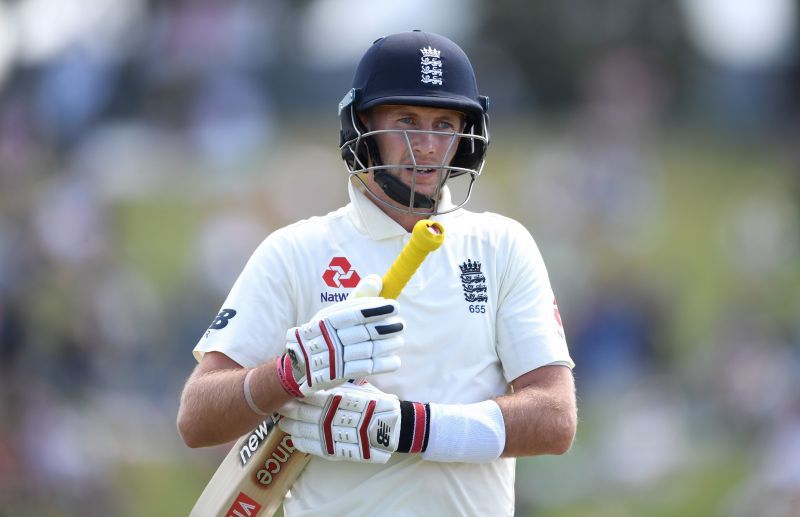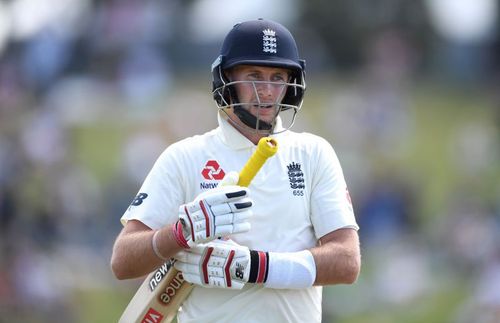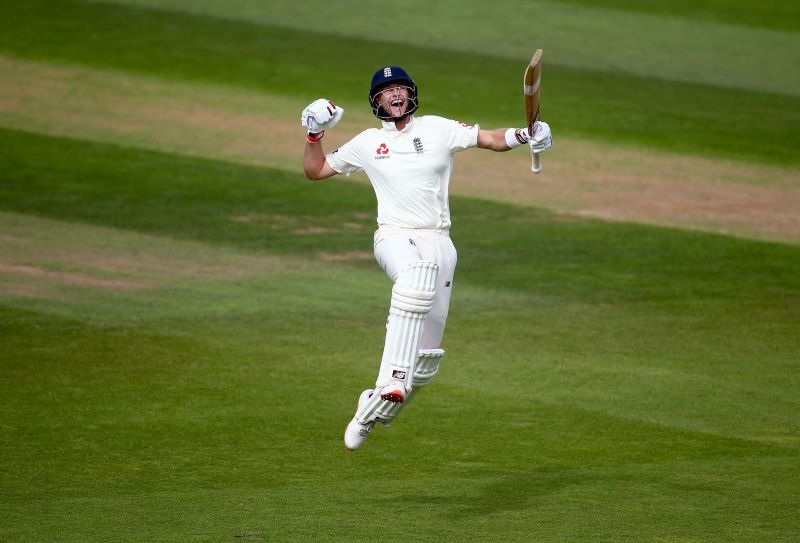
Joe Root and his path to reclamation of 'Fab Four' status

Back in December 2012, Joe Root, a precocious youngster strode out to bat on a dustbowl at the VCA Stadium in Nagpur, with England eyeing a historic series victory. Prior to that, the Three Lions had won at Kolkata and Mumbai, meaning that they had fashioned a 2-1 lead, despite having the odds stacked against them.
However, at Nagpur, in conditions that seemed suited to India’s four-pronged spin attack, they found themselves in siege, having been reduced to 139-5. Furthermore, at that juncture, they’d lost Sir Alastair Cook and Kevin Pietersen – the batsmen that had taken apart India’s assortment of spin bowlers.
Thus, plenty expected the Three Lions to crumble under pressure and hand the hosts the initiative, as the latter itched to make something of the rubber. Yet, India themselves confronting Joe Root – a batsman who had made waves in the domestic circuit, but someone whose credentials were untested, at least in international cricket.
And, 229 balls, 289 minutes and 73 runs later, Joe Root had portrayed that he was indeed worth the hype. More importantly though, he showcased the stomach for fight, on his debut – one that endeared him to the England faithful and left the rest of the cricketing fraternity gaping in awe.

In the years that proceeded, Joe Root quickly propelled himself as one of the premier batsmen in world cricket, often finding himself being included in the famed ‘Fab Four’ of modern batsmen, which comprised Messrs. Kane Williamson, Steve Smith and of course, Virat Kohli.
In fact, such was Joe Root’s dominance that he averaged a tick over 50 runs-per-innings until November 2018 – a stellar achievement considering he has plied his trade most often in the unforgiving English batting surroundings. However, akin to how great players undergo a trough, just after scaling their highest crest, Joe Root’s Test career has also seemed in decline since 2018.
To put things into perspective, he only accumulated 948 runs (in 24 innings), 851 runs (in 23 innings), and 464 runs (in 13 innings) in 2018, 2019, and 2020, respectively. Prior to that, he had only endured one calendar year (2013), wherein he averaged below 49.
Additionally, there also seemed to be a relation between his plummeting average and his dropping strike rate, meaning that bowlers had started coming to grips with his scoring zones. And, had begun to tie him down before landing the knockout punch.
Joe Root, since the start of his career, has always been a free-flowing batsman. In the process, he has been someone who has liked to stamp his authority on the contest and impose himself, often changing the tempo of the game.
However, with that aspect not particularly coming to the fore in recent years, there was palpable skepticism around his tenability as one of the ‘Fab Four.’ Not just because the runs were relatively drying up, but also because Kane Williamson, Steve Smith (despite the ban) and Virat Kohli were plundering them for fun.

Consequently, the series against Sri Lanka, which was initially postponed to the COVID-19 pandemic, was looked upon as the first stop on Joe Root’s path to reclamation of the Fab Four status. And, so far, one reckons he has accomplished what he might’ve wanted to.
Though he has played just a solitary innings against the Islanders, there have been significant signs that Joe Root might’ve indeed turned a corner. While a tally of 228 runs certainly helps, it was the manner in which he got them that put out a caveat that Joe Root was far from a batsman on a downward spiral.
The English skipper walked out at Galle with his team in a spot of bother, at 17-2. The situation came in the aftermath of the visitors skittling out Sri Lanka for 135, thereby making their first innings even more vital, considering the Three Lions had to bat last on a Galle track that has often broken up dramatically on Day 4 & 5.
Yet, he refused to buckle down, instead unfurling an array of perfectly executed sweep strokes. Additionally, he showcased a wide range of those shots, often being able to pick the gap between fine leg and straight mid-wicket – something that didn’t allow the Sri Lankan spinners to settle.
More essentially, though, Joe Root batted at the tempo that he has been most comfortable at throughout his career. Even when there weren’t many boundary opportunities, he opted to rotate the strike and put the bowlers under pressure, courtesy incessant singles and doubles.
Contextually, of the 228 runs he scored, only 78 came in boundaries (12 fours and 1 six). While the sluggish outfield at Galle might have been to blame, the difference in the percentage of runs definitely indicate that Joe Root didn’t get bogged down – a trait that has regularly separated him from the rest, but one that had also gone a tad amiss, in recent years.

Most tellingly though, the double hundred, which has since been touted as one of the greatest played by an English captain overseas, is crucial as the Three Lions embark on one of their more paramount years in Test cricket.
For one, they still harbor meagre aspirations of reaching the inaugural ICC World Test Championship final, which is set to be held at Lord’s. And, they also have the small matter of playing 9 Tests (4 away and 5 home) against India - the outfit labeled as the gold standard and a land which has often been treated as the final frontier for any English batsman and skipper.
Thus, Joe Root’s runs form the bedrock of any prospective conquest England target in India, not just because he is their best batsman, but also because he seems to captain well when among the runs.
In fact, in away Tests England have played under Joe Root and have either drawn or won, the right-hander’s average spikes up to 57.88 across 17 innings and 10 games. Moreover, in matches when he has not been leading the side, his average in won/drawn away fixtures climbs up to 60.11, thereby taking his overall average under those parameters to 59.02 (in 22 matches).
In contrast, Virat Kohli, in away Tests that India have won or drawn, averages 40.55 in 37 games. Steve Smith, meanwhile, has a tally of 53 runs-per-innings whenever Australia has not faced defeat in an overseas Test.
The only batsman among the Fab Four to average more than Joe Root under those yardsticks, is Kane Williamson, who boasts stunning numbers of scoring 77.03 runs per innings, when New Zealand has drawn or won a game abroad.

Thus, on that particular metric, there is little to suggest that Joe Root isn’t as influential as his Fab Four contemporaries. To an extent, there is even an argument hinting that Joe Root’s fortunes with the willow dovetail directly with how England performs, meaning that in an era of Ben Stokes, James Anderson, and Stuart Broad, he still represents the Three Lions’ most potent match-winner.
Consequently, even if Joe Root hadn’t ground the Sri Lankans into submission at Galle, there were enough indicators advocating the theory that Joe Root remained full value for his place in the Fab Four, despite certain sections of the cricketing world chomping at the bit to replace him with Babar Azam.
Yet, the essay at Galle has reaffirmed his status as one of the elite game-changers the sport has seen, at least in the 21st century, if not across cricket’s fabled history.
Joe Root has the fourth-highest average among active Test cricketers
In fact, as things stand, Joe Root boasts the fourth-highest average of active cricketers to have played more than 20 Tests. As for those ahead of him, well, they’re named Kane Williamson, Steve Smith, and Virat Kohli.
However, with the aforementioned scoring truckloads of runs lately, Joe Root has to ensure that his purple patch continues, for nothing but the sheer weight of scores would put paid to that particular debate. And one feels doing that against India might go a long way in silencing the critics that have recently doubted one of the greatest English batsmen to have ever lived.
As far as poetic narratives are concerned, it perhaps seems fitting that Joe Root arrives on the very shores where he made his first splash, and against the opposition that endured a first-hand experience of just how good he could be.
Unles something calamitous occurs between now and the 5th of February, when England and India are set to clash swords at Chennai, Joe Root will turn out in his 100th Test, hoping to paint a picture of assuredness and unrivalled quality – much like he did all those years ago at Nagpur.
If that happens, England will fancy themselves another historic triumph, for when Joe Root does well, usually the Three Lions do so too. To add to all of those narratives, it would also set the English skipper’s place in the Fab Four, in stone.
And, for him to truly establish himself as an all-weather cricketing champion, nothing but that would suffice. To be fair to him, though, he couldn’t have expected anything else on the road to eternal greatness, could he?